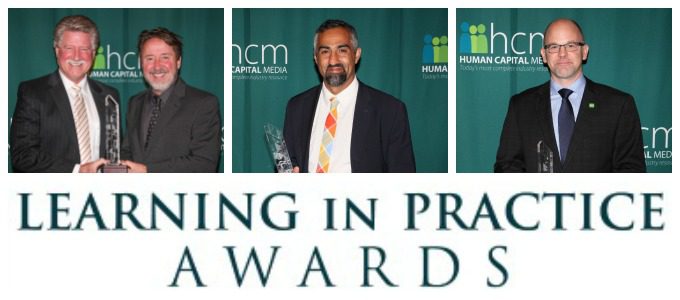From left: Michael Richey, Kia Afcari and David Strainick
Gold
Michael Richey
Associate Technical Fellow, The Boeing Co.
There is a significant gap between what is required to obtain an engineering degree and what is expected to maintain an engineering job. The Boeing Co. is working to fill it.
The Aerospace Partners for the Advancement of Collaborate Engineering, or AerosPACE, program is the company’s effort to forge a collaborative partnership between universities and the engineering industry. The intent is to motivate students to pursue careers in the engineering field while filling gaps in student skills related to the current state of the global workforce.
Michael Richey and Boeing’s team developed the program to tackle school-to-work pipeline issues, which has proven to be a significant business challenge for both Boeing and the industry overall. Skilled and highly trained employees are currently aging out of the workforce. At Boeing specifically, 18 percent of the workforce is eligible to retire, and these individuals are currently doing so at a rate of 2 percent per year. The current education system is not producing candidates with the skill sets necessary to fill these positions across U.S. industries.
The company’s solution has been to partner with universities to create an advanced degree program that helps close the theory-to-practice gap while offering students direct exposure to the companies they will likely be working for in the future. Partner schools include Brigham Young University, the Georgia Institute of Technology, Purdue University and the University of Washington.
Collaboration drives the initiative. Students from these different campuses are put onto small teams with faculty members and mentors. The program emulates the industry and challenges the students to develop the next generation of advanced manufacturing innovators in these teams. Students connect via the cloud and gain skills at a much faster rate than a single user.
Sixty percent of participants now work in the industry, while 40 percent have gone on to pursue advanced degrees.
Silver
Kia Afcari
Project Manager of High Performance Culture – Operating Principles, University of California at Berkeley
As a leading public university, the University of California at Berkeley has a reputation for academic excellence, ground-breaking research and a commitment to public service. Its administrative operations didn’t share the same level of excellence.
Ineffective human resources practices and a disjointed campus culture besmirched the organization until it launched the Operational Excellence program in 2009. That effort produced 24 projects aimed at reducing administrative costs, creating more efficient operations and establishing a culture of continuous improvement. Kia Afcari, project manager of high performance culture-operating principles, spearheaded the Berkeley Catalysts program to locate and develop leaders within the university.
Afcari helped develop a curriculum that shifted learning from a “sit and get” to an “engage and try again” model. The result was a series of nine daylong learning labs that gave these “catalyst” leaders the skills necessary to drive communication and collaboration within their departments.
While the full impact of the program is still being realized, the initial results have been positive. Employees have praised the program, saying that the cultural change it ignited persuaded them to remain at the university instead of seeking work elsewhere.
Bronze
David Strainick
Global Head of Learning, NCR Corp.
NCR Corp., a consumer transaction technology company, needed to improve employee training. Its 20-week onboarding program took place at central locations that required the company to pay flight and hotel expenses for new trainees. Worse, it wasn’t effective. The company faced high revisit rates for the same equipment issues that were driving down customer satisfaction ratings.
David Strainick of NCR responded by reinventing learning processes in 2012 to drive collaborative learning that is efficient and uses the latest data delivery modalities. Since its inception, the new strategy has acceleratedtime-to-competency by 60 percent, delivered 140 percent more training at 17 percent less costs, which yielded an overall 10 percent performance improvement.















